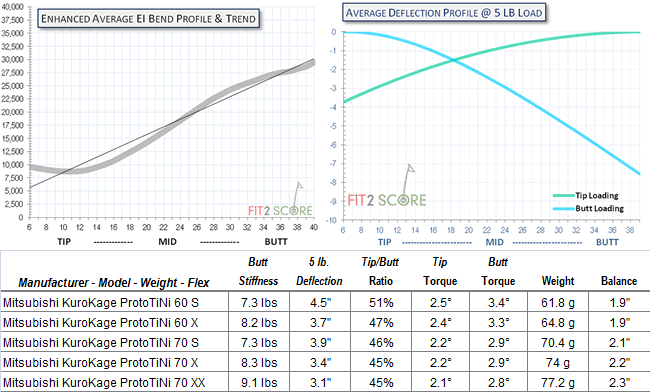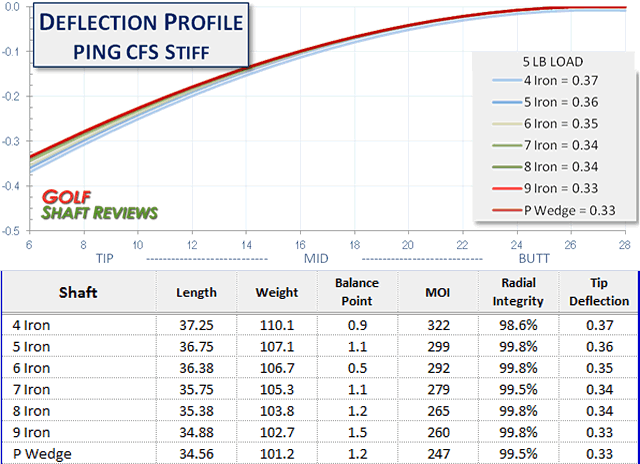Mitsubishi KuroKage Proto TINI Driver
By Russ Ryden, A Golf Digest America’s 100 Best Clubfitter
Fit2Score, Dallas Fort Worth, Texas
The KuroKage Proto TiNi is available only through selected Mitsubishi dealers. I briefly covered this shaft in an earlier review and did not give it the attention it deserves. It is currently in the driver of the #1 player on the PGA tour. His shaft is a custom made version, beyond the 7-XX available to Mistubishi dealers. My friend Biv Wadden has me continuously building drivers for his students with this shaft. When you have as many shafts as I do in my fitting system, some go unnoticed as I tend to fit what I know. Biv’s praise of this shaft got me to take a closer look and start testing the shaft myself.
“For the past year, I’ve been putting most of my competitive students into the KuroKage prototype tour edition shaft with its nickel-titanium tip – in both drivers and 3-woods. It consistently produces higher ball speeds and lower dispersion than any other premium shaft I use.”
Biv Wadden
The result, the Diamana ilima’s, which have had a 3 year run in my fairways have been replaced with KuroKage Proto’s. With a $400 price tag this is not likely to become a best seller. Unless of course you try it and it fits your swing. Here is a look at the shaft measurements from the latest version of the Fit2Score knowledge-base.
 Radial integrity of the samples was 99.5% with a 0.3% standard deviation, excellent. Hoop strength was a little lower on the handle end of the 60 gram shafts. The balance is high like most driver shafts now being produced. The profile shows a soft handle, moderate mid, stiff tip design, with a maximum bend in the 14″ region. The lower 12″ of the shaft is wrapped with Titanium Nickel Wire touted by Mitsubishi as able to stretch then immediately regain its original shape. This material is used in the KuroKage Silver, but the Proto has a longer section of the impregnated with the TiNi wire. While both shafts incorporate the TiNi wire, the profiles are about as different as MRC profiles get.
Radial integrity of the samples was 99.5% with a 0.3% standard deviation, excellent. Hoop strength was a little lower on the handle end of the 60 gram shafts. The balance is high like most driver shafts now being produced. The profile shows a soft handle, moderate mid, stiff tip design, with a maximum bend in the 14″ region. The lower 12″ of the shaft is wrapped with Titanium Nickel Wire touted by Mitsubishi as able to stretch then immediately regain its original shape. This material is used in the KuroKage Silver, but the Proto has a longer section of the impregnated with the TiNi wire. While both shafts incorporate the TiNi wire, the profiles are about as different as MRC profiles get.
The KuroKage Proto was the first of the heavier shafts to incorporate the TiNi wire that had been used in UltraLight Bassara series of shafts. It was also the first to use 40 ton fiber. Mitsubishi Rayon is now using 80 ton fiber in the hoop layers of the third generation Diamana’s. The Bassara UltraLite Phoenix, released in 2014 is a light weight version of this profile. It adds the lighter weights not offered in the KuroKage Tour Edition shaft.
The profile is very similar to the Diamana ilima. The butt a little stiffer the tip a little softer. It launched much the same for my swing with a little less spin, creating a more boring flight. The 70-XX in the hands of the +110 kids is delivering tight dispersion, with good trajectory and a little lower spin than would be expected for the launch. And that combination, as Biv tells me, equates to distance.


